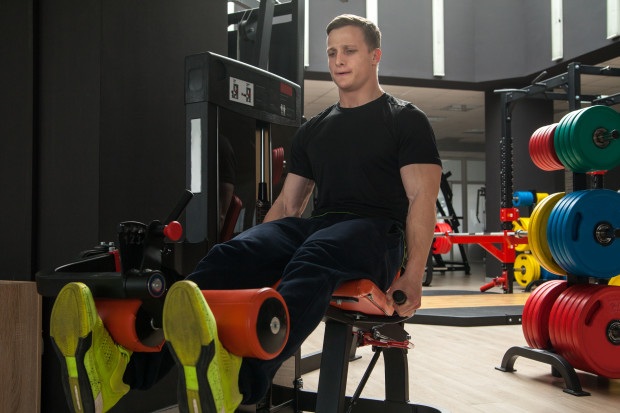[ad_1]
In a world of compound movements, functional training, and full-body exercises, the leg extension sometimes gets dismissed as a one-trick pony. After all, it’s an isolation move that hits just one muscle group, the quadriceps, and is performed on a machine—unlike the squat, considered a more manly barbell movement that hits the entire lower body and delivers many benefits.
The leg extension is one of the more polarizing exercises. Some people love it and see tremendous value whereas others find it a waste of time, citing other quadriceps moves that produce more benefit. Either way, the leg extension’s simplicity is also its greatest asset and a solid move for building leg strength.
Leg Extension Benefits
Leg extensions target the quads, which have gone unappreciated in recent years as the popularity of functional movement and CrossFit routines have emphasized the hips and core. But dismissing the quads as aesthetic muscles or “lower body triceps” neglects a vital part of your body’s operating system. That’s because the four-pronged quadriceps muscles serve to extend the knees, thus making strong quads crucial for walking, running, jumping, and squatting.
The quads play an essential role in stabilizing the knees and helping to flex the hips, which tighten after a full day of sitting at a desk or behind the wheel. Strong quads are necessary for movements of everyday life and athletic activity. Few moves work the quads better than the leg extension.
Related: 50 Best Leg Exercises of All Time to Build Muscle
What Does the Leg Extension Work?
With leg extensions, you focus just on the quads: the vastus medialis, vastus lateralis, vastus intermedius, and rectus femoris. The rectus femoris is the most commonly injured quad muscle in sports, partly because it flexes the thigh at the hip and extends the leg at the knee joint.
This muscle, like the rest of the quadriceps, deserves special attention. Few moves give you more immediate visual feedback as leg extensions, since you can see the quads flex and contract as you raise and lower the padded bar.

How to Do Leg Extensions
- When setting weight on a leg extension machine, fight the urge to load it with heavy resistance, especially at first. Better to focus on proper form and really feel it in your quads.
- Sit in the leg extension machine. Depending on the height of the last person to use the device, you might need to adjust the seat pad back or forward. Position your legs under the pad and grab the rails with your hands. Adjust the shin pad so it’s just above your ankles.
- Extend your legs as far as possible, exhaling as you do so. Though this is a simple move, get the most out of it and avoid injury by taking it slow and avoiding fast movements that can increase the chance of hyperextending the knees.
- Pause for two seconds in this contracted position, increasing the time under tension without locking the knees at full extension.
- Lower the weight as you inhale back to the starting position. Remember, slow. Don’t simply drop back to the starting position, or bring your legs beyond a 90-degree position.
Related: The 10 Best Legs Exercises for Beginners
How to Add a Leg Extension Into a Workout
As an isolation exercise for the quadriceps, leg extensions are a key part of leg days and can be performed after compound movements like deadlifts or squats. Some people like to lead off with leg extensions. Others prefer to save them for last to get that final leg burn in a lower-body workout.
Leg Extension Variations
Unlike other moves, there’s little variation to doing leg extensions other than adding or decreasing weight. If you’re somewhere without a leg extension machine, you can improvise with any exercise where you must contract your quadriceps against a resistance that produces the same effect. If at home or traveling, sit on a chair and use ankle weights or resistance bands.
[ad_2]
Source link

Hi! I’m a dedicated health blogger sharing valuable insights, natural remedies, and the latest scientific breakthroughs to help readers lead healthier lives. With a holistic approach to wellness, I empower individuals with accessible and actionable content, debunking myths and offering practical tips for incorporating healthy habits.